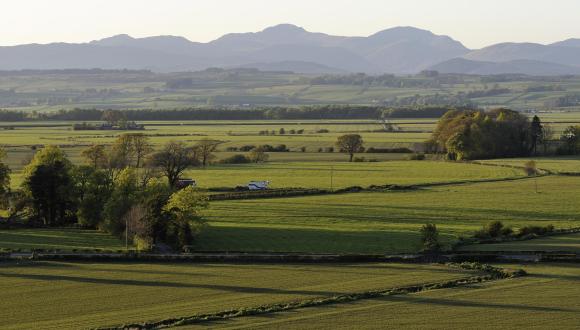Natural Capital Assessment Template - Case Study - Native breeds in crofting

Background
Burns Croft is where a third-generation crofting family in the Western Highlands is working hard to keep the crofting tradition alive. The family farms about 4 ha across three crofts, 15 ha of inbye land and shares in over 1250 ha of common grazings The family runs various enterprises, one of which is a livestock enterprise of native breeds. They rear Hebridean sheep and keep a mixture of Highland, Luing and Shorthorn cattle. The low intensity grazing of cattle and sheep, is combined with some rotational cropping/fallow land grown for fodder. This system supports a wide range of arable and grassland flower and bird species. Biodiversity is reliant on this traditional system of crofting.
Approach
Hardy native sheep and cattle graze extensively on the commons and stocking rates are low, allowing a mosaic of habitats. The farm uses minimal external inputs (bought in fertiliser and animal feed). They produce hay, which is quite labour-intensive, however, it enables biodiversity to thrive, encouraging wildflower meadows, which support insect and bird populations. Retaining cattle on the croft, helps to maintain and enhance diverse grassland and wetland habitat.
Financial pressures have prompted the family to consider whether moving away from native and rare breed livestock towards more conventional continental breeds might be a more profitable approach to crofting. They therefore worked through a comparative gross margin analysis for continental cattle versus their own cattle.
Cost and benefits
Their analysis concluded that, due to a shorter calving interval and higher calf sale values, total outputs from a continental suckler herd would be higher than their own system. However, herd depreciation costs were higher with continental cattle; at the same time, concentrate costs, vet and medicines costs and bedding costs were all lower for native breed cattle. The overall effect is a gross margin per head (before forage) for continental cattle barely any higher than their continental breeds.
Once forage costs are factored in, the native-bred suckler cows proved to be a more profitable enterprise than the continental-bred suckler cows. The native breeds are more efficient forage converters and would retain condition better on the coarser grasses found on the common grazing. The native breeds are also lighter, so the risk of poaching is lower, and generally much better suited to a low-input, forage-based system.
This comparative analysis proved to the family what they felt intuitively: that their native-breed cattle represent a valuable agricultural heritage, with characteristics that have been selected specifically for their type of low-input, extensive system. However, the economics of a suckler cow enterprise on the croft are still extremely challenging, which is why they have made use of the AECS Option “Cattle Management on Small Units (Introduction / Retention)” – intended to encourage small units to introduce or continue to keep cattle of traditional or native breeds.
|
Annual Marginal Costs |
Per Hectare (£) |
|---|---|
|
Lower gross margin (before forage costs) |
55.36 |
|
Total |
55.36 |
|
Annual Marginal Benefits |
- |
|---|---|
|
Lower forage costs |
63.73 |
|
AECS Cattle Management on Small Units |
107.38 |
|
Total |
171.11 |
|
Annual Marginal Cost: Benefit |
115.75 |
AECS funds introduction and retention of cattle on crofts: Cattle management on small units as well as supporting mixed farming systems on crofts through the Conservation management of small units
Challenges
The main challenge of this crofting enterprise is obtaining a decent price for the calves, as they are fattened elsewhere. This reduces the options to get a higher price for a calf.




